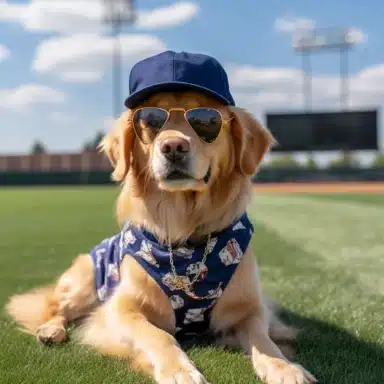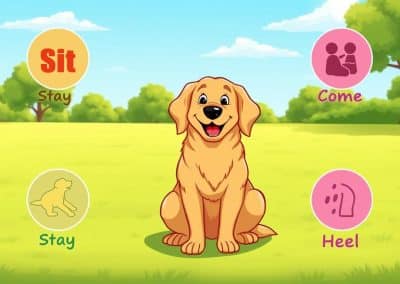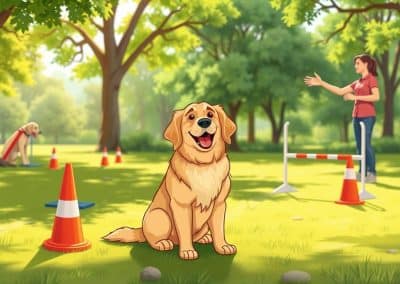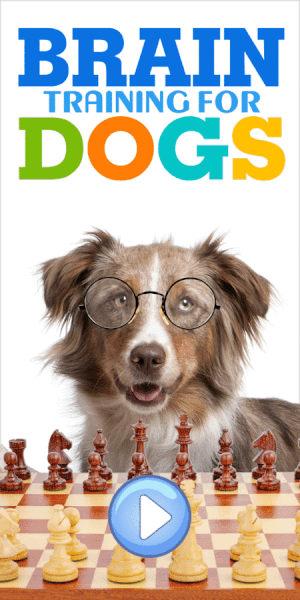Does Your Golden Retriever Want Alone Time?. Golden Retrievers are known for their friendly and affectionate nature, often being described as the epitome of a family dog. They typically enjoy human company and are eager to participate in activities with their owners. However, like any individual, a Golden Retriever may sometimes desire a moment of solitude.
Recognizing when your furry companion seeks alone time can be a subtle art, given their non-verbal communication methods.

Observing a Golden Retriever’s body language provides invaluable clues into their emotional state. They might retreat to a quiet corner of the house or turn their body away when they need a break from interaction. Some may even avoid eye contact or seem indifferent to usual commands or invitations to play.
Understanding these signals is essential for respecting their boundaries and ensuring their well-being.
Why is it important to pay attention to these cues? Consider the trust and respect that form the foundation of your relationship with your Golden Retriever. By acknowledging their need for space, you’re deepening that bond. It’s a gentle reminder that they are not just pets but sentient beings with their temperament and preferences.
Recognizing Your Golden Retriever’s Need for Solitude

Golden Retrievers are known for their sociable nature, but just like humans, they sometimes need a break. Observing your dog’s behavior closely can reveal their desire for some quiet time.
Identifying Solitude Signals in Dogs
Have you ever noticed your Golden Retriever wandering off to a quiet corner after a busy day of play? This could be a sign that they are seeking a moment alone.
Dogs often indicate their need for solitude through body language. Withdrawal from social interaction, avoiding eye contact, or retreating to an isolated spot can all be telltale signs. They may also express their need for space by turning their head away when you try to engage with them.
It’s important to respect these signals and allow your furry friend the alone time they’re asking for.
Age-Specific Behavior and Alone Time
The age of your Golden Retriever can greatly influence their need for solitude.
Puppies may require short periods of alone time to process their rapid learning and experiences. On the flip side, senior dogs often seek solitude simply because they get tired more easily and may need extra rest away from the hustle and bustle.
Paying attention to these age-related behaviors is crucial in providing an environment that supports your dog’s well-being at every stage of their life.
Training for Contentment When Alone

Golden Retrievers, known for their social nature, may struggle with being alone. Proper training can teach them to enjoy or at least tolerate solitude without stress.
It’s about setting the stage for a happy, independent dog even when their human isn’t around.
Crate Training Fundamentals
Crate training lays the foundation for a safe haven where the dog feels secure.
Start by choosing a crate that’s large enough for your Golden Retriever to stand, turn around, and lie down comfortably.
Introduce the crate with positive associations—meals inside the crate and cozy bedding can make it an inviting place.
Never use the crate as a punishment; it should always be a positive, safe space for them.
One trick is to leave a piece of your worn clothing inside, so your scent continues to provide comfort. Hasn’t it been noted time and again how dogs love anything that smells like their human?
Introducing Alone Time Gradually
When it comes to leaving them alone, it’s all about baby steps.
Begin by stepping out of sight for a few moments while they remain in their crate, gradually increasing the duration as they become more comfortable.
Create a routine that forecasts alone time with a specific toy or treat, so they start to see it as just another part of the day.
Ever noticed how a calm, “I’ll be back soon” works better than making a big fuss when leaving? Because dogs pick up on their human’s cues, displaying confidence and calmness can help them mirror that behavior.
It’s not just about them learning to be alone, it’s also about us learning the best way to leave.
Ameliorating Separation Anxiety

When it comes to easing the worry gripping a dog during their owner’s absence, understanding the root and manifestations of that stress is key.
Golden Retrievers often thrive on companionship, so their distress when alone can be both poignant and concerning.
Understanding and Reducing Anxiety
Why should a Golden Retriever’s separation anxiety matter to them? For starters, it can fray the deep bond shared with their human.
Reducing a dog’s anxiety is not merely about quelling unwanted behaviors; it’s about fostering their emotional well-being.
Owners can mitigate stress by maintaining predictable routines and providing reassuring cues that say “I will return.”
It’s about ensuring their treasured companion feels secure, even during solitude.
Remember Joan’s Golden Retriever, Max? She’d find Max’s favorite tennis ball waiting by the door upon her return, a sign he’d been coping in her absence.
She realized consistent short leaves, coupled with a reward upon return, gradually eased Max’s tensions.
This strategy is supported by experts who suggest routine as a framework for stability, reinforcing a dog’s sense of order and predictability.
Behavioral Signs of Separation Anxiety
Golden Retrievers may not speak, but their actions shout.
Chewing up shoes or furniture, it’s not mischief – it’s a plea for help.
These behavioral outcries are key in recognizing the struggle within. They aren’t just acting out; they’re communicating their distress.
When Rita noticed her Golden, Sunny, was pacing and howling each time she left, she knew it was more than just missing her.
These behaviors signaled a deeper anxiety.
With advice from a trusted vet, she introduced interactive toys to occupy Sunny, breaking the monotony of her absence.
Engaging activities redirect focus, a tactic supported by the signs and strategies highlighted at Devoted to Dogs, which outlines various symptoms and solutions for canine anxiety.
Home Alone: Creating a Comfortable Environment

Golden Retrievers are known for their loving and social nature. However, they also need their alone time to recharge. This section will explore how to create a stress-free environment when your Golden Retriever is home alone, with a particular focus on establishing safe spaces and leveraging companionship—or the feeling of it—to keep their spirits high.
Safe Spaces and Comfort Items
Every Golden Retriever needs a space they can call their own.
Imagine a corner of your home transformed into a cozy retreat for your furry friend, complete with a soft bed, their favorite toys, and perhaps even a shirt that smells like you.
It’s not just about physical comfort, but also about providing emotional security. With these comfort items, they can snuggle in familiarity even when solitude surrounds them.
Companionship:
Is a TV or radio just noise, or can it actually mimic companionship for your Golden Retriever?
Leaving a talk show or a calm music playlist on provides a comforting backdrop of human voices, simulating the bustle of a lively home.
It’s a simple trick that makes a lot of sense once you consider how much they crave companionship, even in its most basic form.
Do other pets in the house contribute to this feeling? Absolutely, but let’s not forget the value of background chatter in creating an environment that feels less isolated.
The Impact of Companionship
While you can’t always be there in person, you can certainly leave part of yourself behind.
Incorporating companionship can have a tremendous effect on your Golden Retriever’s happiness.
Wondering if those puzzle toys are worth the investment? They’re not just toys; they’re conversation starters sparking mental stimulation.
Can other pets fill the void of your absence? They do more than that—they share the silence and, in doing so, make it less loud.
Remember, companionship isn’t just about having someone else there—it’s about feeling connected, and there’s more than one way to foster that connection.
Encouraging Self-Entertainment
Golden Retrievers are social animals, but it’s equally important for them to learn to enjoy time by themselves.
Helping them engage in self-entertainment promotes independence and helps prevent destructive behavior due to boredom.
Toys and Puzzles
Provide your Golden Retriever with a variety of toys that cater to their instincts to chew and fetch, like durable chew toys or a classic Kong that can be stuffed with treats.
They stimulate the dog’s brain and encourage them to solve problems.
Remember how Max, the Golden Retriever from next door, would spend hours on end retrieving his beloved squeaky toy? It kept him busy while also giving a much-needed rest to his human companions.
Interactive Entertainment Sources
Some Golden Retrievers may find games on pet-friendly apps or channels on TV made specifically for dogs entertaining when they are alone.
These can capture their attention and keep them engaged, acting as a virtual companion.
Ever noticed how Bella gets entranced by the sounds and movements on the television, tilting her head and even bopping her nose against the screen?
It’s a safe and soothing way to keep her entertained while her family steps out.
Social and Physical Needs

Golden Retrievers are known for their friendly disposition and energetic lifestyle. It’s essential to understand how and why their social interactions and physical activities impact their overall well-being.
The Importance of Daily Exercise
Golden Retrievers thrive on regular exercise. Daily activities like walking and swimming fulfill their physical needs and serve as a cornerstone for their mental health.
One might wonder, is a simple walk around the block enough? For a Golden, it’s often a resounding no. These dogs love more vigorous activities that challenge their body and mind.
Remember Maggie, my neighbor’s Retriever? She wasn’t herself until she started her daily swims at the local lake. The swims turned her from a couch potato into a vibrant and healthier companion.
Balancing Attention and Independence
While these sociable canines adore being the center of attention, they also need time to themselves. Striking the right balance begs the question: how much love and socialization versus alone time does a Golden need?
Max, a friend’s Golden, shows us that independence is key. After his hearty dose of exercise, he likes to retreat to his favorite spot for some well-earned rest.
Providing a safe space where they can unwind without feeling isolated is crucial. They need to feel part of the family unit while also having the liberty to enjoy their own company.
Maintaining Health and Happiness When Alone

Golden Retrievers may treasure their moments with humans and fellow canines, but just like us, they sometimes need their own space. Providing for their health and happiness during alone time is every bit as crucial as the love and attention we lavish on them directly.
Feeding and Potty Break Routines
Regular feeding and potty break routines set a stable rhythm for Golden Retrievers, which is vital when they find themselves alone.
Is your furry friend used to having lunch right at noon? Sticking to such schedules helps avoid the stress that erratic meal times might prompt. Also, don’t forget to ensure they have access to fresh water throughout the day.
Routine isn’t just about predictability; it’s about meeting basic needs consistently. That means setting specific times for urinating and defecating, and sticking to them.
Say, for example, that every morning at 7 AM sharp, you open the back door for a garden potty break. Your dog learns to trust that his needs are understood and met, even if you’re not there the whole day.
Monitoring for Unusual Behavior
Behaviors can change when left alone. Keep an eye on your dog so you can spot anything atypical.
For instance, if your typically nonchalant Golden starts showing signs of excessive digging or prolonged isolation, it may be a clue he’s not getting what he needs during his solo time.
Watching for these behaviors doesn’t require a spying operation, but it does mean paying attention.
Have you noticed she hasn’t touched her food in a while or that the water bowl remains full? Maybe the toys are exactly where you left them, untouched.
These little clues can be insights into her emotional state. Is she really relishing her alone time, or is she waiting for her human companions to return and enliven her environment?









